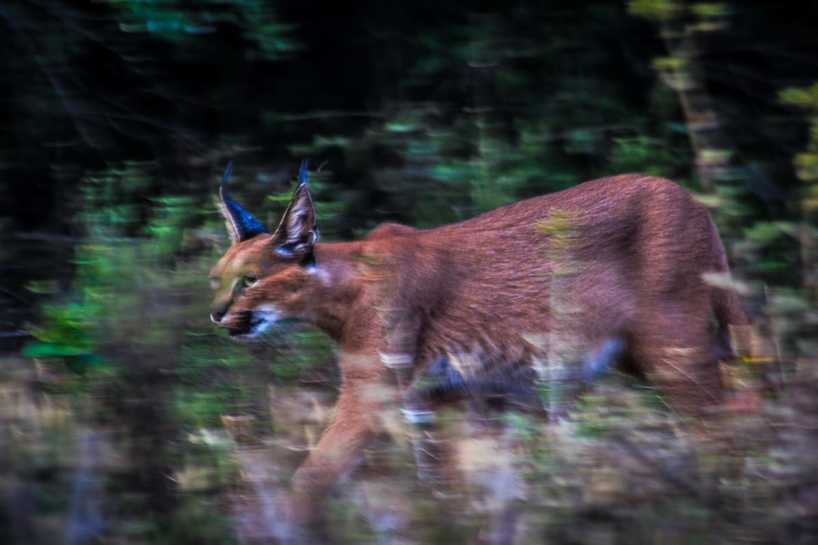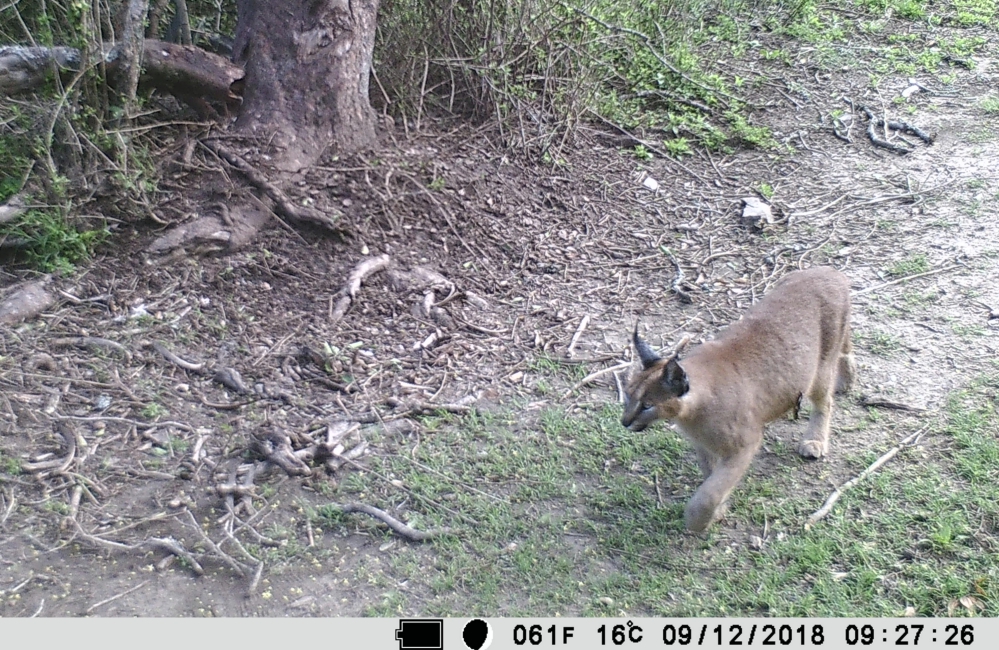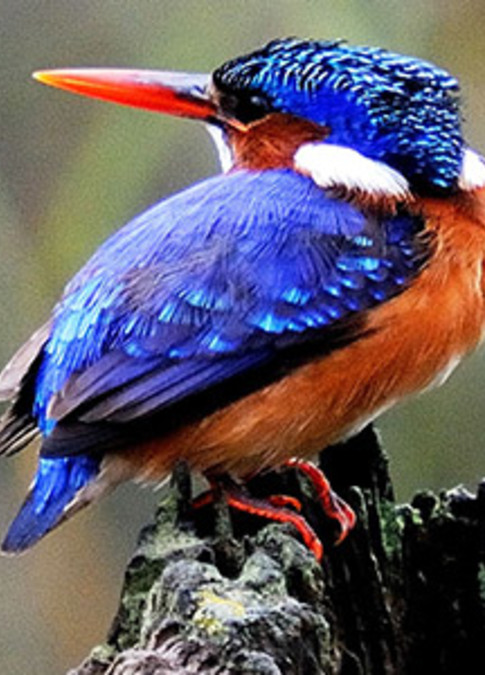Caracal or Lynx?

South Africa is home to amazing and unique wildlife - some 299 species of mammals, 858 species of birds, 517 reptile species and 169 frog species to be exact! All of these species have adapted to their natural surroundings and these adaptations make them unique and fascinating to watch and learn about while on safari.
An interesting nocturnal mammal that is rarely seen is a medium-sized wild cat called a caracal or lynx. While on your African safari you may hear your guide using both of these terms for this wild cat as an alternative name for the caracal is Persian lynx or desert lynx. However, the lynx is a completely separate species and is not found in Africa at all. The four species of lynx (Canada lynx, Iberian lynx, Eurasian lynx and bobcat) live in North America and Eurasia and have spotted or blotched coats.
Five Interesting Caracal Facts
The caracal has a golden sand to reddish tan coloured coat, long legs, a short face and black tufts reaching up from it's longish ears. The cats are usually about 40–50 cm (16–20 in) at their shoulders and can weigh up to 18 kilograms (40 lb). Caracals are carnivores and are usually seen alone or in pairs. Their reported highest population density is in the mountainous terrain of the Eastern Cape province of South Africa.
Here are five interesting caracal facts:
- These medium-sized cats can jump up to three meters. They use this skill to catch birds in flight.
- They have long black tufts of hair on their ears which is believed to be used for gauging the height of caves they are exploring underground.
- The word caracal is derived from the Turkish word "karakulak" which means "black-eared".
- A caracal's Afrikaans name is "rooikat" which directly translated means red cat.
- Caracals are native to Africa, Middle East, Central Asia and India.

What do Caracals Eat?
Caracals are predators who use their amazing ability to jump into the air to catch birds in flight. The have many other hunting strategies and often use their incredible sense of hearing to find and then stalk an unsuspecting prey before pouncing on it. These felines will hunt in short grass if they are looking for rats, mice, hares and snakes. They look in longer grass for ground nesting birds or small antelope that are hiding their young. Caracals will also raid birds nests and eat eggs and chicks.
Farmers' Dislike Caracals
Caracals do not only live in conservation areas such as Kariega Game Reserve, but are also found in urban and rural areas. Livestock farmers dislike caracals as they are known to prey on poultry, goats, sheep and other small domesticated animals. These sneaky and ingenious wild cats will see a farm as a well-stocked buffet just waiting to be enjoyed! The unsuspecting farm animals are often easier prey than stalking and catching something in the wild and caracals, jackals and other predators will sometimes choose livestock over their natural diet.
Farmers deploy many techniques to try to keep these sneaky carnivores away from livestock. Ethical and environmentally-friendly methods include electric fencing, flood lights and dogs. However, some farmers unfortunately use poison or shoot caracals who try to raid their farms.
As part of our conservation work at Kariega Game Reserve we encourage local farmers to bring caracals to our wilderness area. We then release these animals onto the reserve to find a new territory far away from domestic livestock. In the wilderness caracals are always on the lookout for similar sized or larger predators who may be a threat to them. Threats may come from other caracals, jackals, hyenas, cheetahs, leopards and lions.
Caracals in Years Gone By
Caracals are thought to have been of some religious importance in the ancient Egyptian culture. The caracal or lynx can be seen in many paintings and there are sculptures of them guarding tombs. Caracals have also been found embalmed.
Historians have noted that Chinese emperors used caracals as gifts in the 13th and the 14th centuries.
In India and Iran caracals were once tamed and used for hunting small mammals and birds for their owners. In colonial India caracals were put with a flock of pigeons and people would bet on which caracal would kill the largest number of birds. This probably gave rise to the British idiom "to throw the cat among the pigeons" which is used to describe a disturbance caused by an undesirable person in a group.

Share Caracal Photos and Videos
Were you lucky enough to see a caracal or lynx on your Kariega Game Reserve safari? If so, please send us your photos and videos by connecting with us on Facebook, Instagram, Twitter and YouTube.
If you enjoyed reading this article and would like to receive our Kariega blogs via email, please click here and add your email address.









